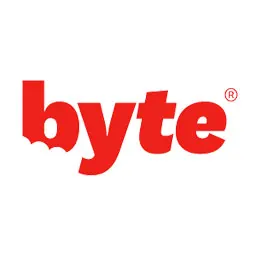A Complete Guide on All Dental Tools Used by Dentists

Table of Contents
- Dental Tools FAQs
- References
When it comes to healthy teeth and gums, a good dental hygiene routine is key to prevention and care. But there are some things you can’t take care of yourself. Regular dentist visits are imperative to making sure your oral health is on track.
Dentists are educated and trained to provide you with the services needed to care for any issues you are facing with your mouth and teeth. In addition to an advanced understanding of all things related to teeth, dentists are equipped with an extensive array of dental tools to treat and prevent conditions like decay and gum disease.
If you’ve been in a dentist’s office, you’ve seen the huge assortment of (sometimes strange-looking) tools. You’ve probably heard the buzzing of drills. So, what are all these complicated tools? And what do they do?
Here’s a guide to the dental tools used by dentists:
A mouth mirror is a simple tool, but it’s one of the most important used by dentists. Mouth mirrors are usually made of stainless steel and have a long thin handle. At the other end is a small mirror (usually round).
Mouth mirrors have three general uses:
They allow dentists to view areas of the mouth that aren’t visible, such as back molars.
With the smooth mirror surface, they can be used to gently move cheek and tongue tissue to get a better view of certain teeth and areas in the mouth.
They can be used to reflect light from the dental chair light in order to illuminate teeth and areas of the mouth.
With a rounded, thin edge that’s easier for insertion near the gum line, the periodontal probe is used to examine a patient’s gum health. Millimeter markings make it easier to determine the depth of any problematic pockets of gum separation or inflammation.
Also known as an explorer, a sickle probe has a long thin handle and a hook on the end that may be curved and sharp-looking. Sickle probes are used to explore the surface of the teeth and identify and caries (cavities), decay, tartar, biofilm, or other problems.
Sickle probes scrape away plaque and provide insight into what’s going on in the more hidden pockets of the mouth and teeth.
Small and handheld, college pliers are used to transfer material into, out of, and around the mouth. The angled tip is ideal for grabbing and moving items like cotton balls, gauze, and dressing during a procedure.
A dental syringe is used to administer local anesthesia (like Novocaine) in order to numb an area of the mouth before treatment, such as a filling. Dental syringes are longer than normal syringes to make it easier to reach areas in the back of the mouth with precision.
Scalers are handheld tools that look like a pick and used to remove significant layers of plaque or bacteria buildup in the mouth. Scalers may be used on patients who have not seen a dentist in a significant amount of time and have plaque accumulation. They may also be used to treat gum (periodontal) disease.
For removing decay on a delicate tooth that isn’t suitable for drilling, a dentist may carefully hand remove decay material with a spoon excavator. They come in three sizes: small, medium, and large.
Ultrasonic tooth cleaners use ultrasonic vibrations to remove tartar and plaque from the teeth. These cleaners are small and also release oxygen into the teeth, helping to further combat harmful bacteria and plaque buildup.
Some dentists and hygienists prefer ultrasonic cleaners to manual scalers because of their effectiveness, and patients tend to be less intimidated by them.
A dentist needs a dry surface to effectively examine and treat your teeth. A suction device (also called a saliva ejector) is a tube connected to a vacuum. The vacuum sucks the saliva from your mouth. The suction is gentle enough not to hurt if it moves to suck on the cheek or gums.
Burnishers have a long narrow handle and a smooth, flat tool on one or both ends. These tools are most often used when performing fillings. The ends are used to smooth out filling material and remove any excess material from the teeth.
Curettes are small handheld tools with rounded tips on the end. They’re used to remove tartar and plaque around the gum line and in gum pockets. The rounded tips are less traumatic on sensitive gum tissue.
The sound of the dental drill is one of the most recognizable sounds of a dentist’s office. This powerful tool is very effective in removing decay from a tooth before a filling and shooting water into your mouth while doing so. The water keeps the drill from getting too hot.
Molds are used to create customized dental products for you like crowns, aligners, and mouthguards. They’re trays that fit into the mouth and are filled with a soft substance. When you bite down, an impression of your teeth is pressed into the mold.
This impression gives your dental professional a clear image of your current bite and teeth, which can be used to create a treatment plan or product.
Also called chisels, Coupland’s elevators are handheld devices (often used in a set of three) with a flattened end. They are primarily used in tooth extractions, placed between the bone and tooth roots to split teeth with multiple roots.
Tweezers are used to move items in and around the mouth. They come in a wide variety of sizes with differently shaped tips. Most offices use multiple pairs of tweezers.
Dental Tools Frequently Asked Questions
The most common basic dental instruments are the mouth mirror, an explorer (sickle probe), college pliers, and an excavator. These are the handheld tools most commonly used by dentists and hygienists.
Handheld dental tools should never be used at home on your own. These tools are very sharp and require precision and training to be used safely and effectively. Using them at home can result in serious damage to your teeth and gums.
Risks include the following:
Gum trauma or injury: Using a dental tool on your gums can easily result in cutting your gums or inner mouth, or pulling or poking gums too deeply. This can result in inflammation and permanent damage. When traumatized, gum tissue may recede. This can lead to serious oral health problems like exposed roots and gum disease.
Damage to tooth enamel: The enamel is the protective layer on the teeth. Scraping your teeth on your own with a dental tool can result in a scraping off or wearing down the enamel. This damage is irreparable and can weaken the overall structure of the tooth and bite.
Infection: Dental tools are carefully cleaned and sterilized before use in a dentist’s office. Using tools on your own can result in the spread of germs or bacteria in your mouth. Gums in particular may be prone to infection if prodded, cut, or irritated by a dental tool.
Pushing tartar or bacteria under the gum line: Without proper training, it’s easy to push tartar or other particles up under the gumline if trying to scrape plaque with a professional tool. This can lead to gum irritation and infection.
Professional dental tools should not be used at home. Trying a DIY plaque scraper or probe can result in cutting your gums or inner, cheek, or mouth. Even if you do not cut yourself with these tools, you may accidentally spread bacteria or push tartar below the gum line, where it can cause a serious infection.
While professional dental tools aren’t safe for home use, there are many effective and specialized dental products and tools that are approved by the American Dental Association (ADA) and available for home use. These include the following:
Specialized mouthwash and toothpaste: Whether you’re concerned about whitening your teeth, minimizing tartar stains, or caring for irritated gums, there’s a safe choice for your needs.
Water and electric flossers: If you’re concerned with your gum health, ADA-approved water flossers have been shown to reduce gingivitis (early gum disease).
Electric toothbrushes: ADA-approved electric toothbrushes effectively clean the teeth. Most have settings and options for your specific needs, such as gum care, sensitive teeth, and other issues. Ask your dentist for their recommendation for your teeth.
Dental picks and interdental brushes: If flossing isn’t an option for you, or you find flossing difficult, flossing tools can help ensure you’re removing daily plaque buildup.
While many dentists and hygienists may use an ultrasonic tooth cleaner during a cleaning, manual tools like a scaler are still used to remove serious plaque buildup. A spoon excavator may be used to remove decay and plaque from delicate teeth.
